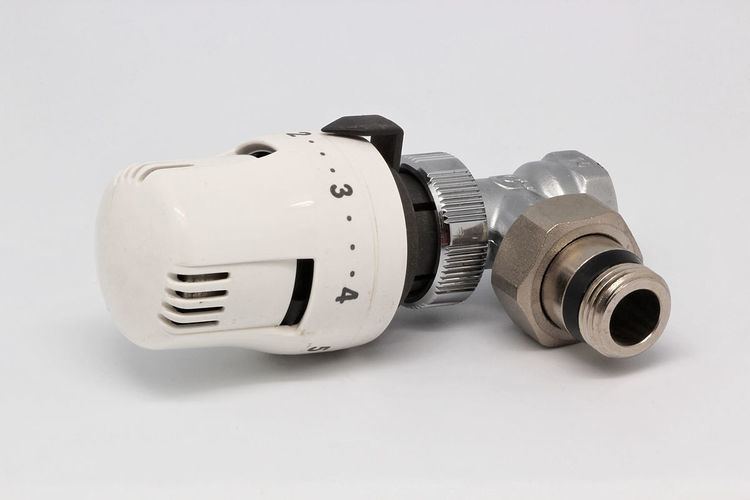 | ||
A thermostatic radiator valve (TRV) is a self-regulating valve fitted to hot water heating system radiator, to control the temperature of a room by changing the flow of hot water to the radiator.
Functioning
The classic thermostatic radiator valve contains a plug, typically made of wax (forming a wax motor), which expands or contracts with the surrounding temperature. This plug is connected to a pin which in turn is connected to a valve. The valve gradually closes as the temperature of the surrounding area increases, limiting the amount of hot water entering the radiator. This allows a maximum temperature to be set for each room.
As the valve works by sensing the temperature of the air surrounding it, it is important to ensure that it is not covered by material (such as curtains). If the controller is removed from the valve the valve turns on and the radiator will always be hot.
The replacement of a manual heating control with a TRV has been estimated to save at least 280 kilograms (620 lb) CO2 per year. They are also considerably cost-efficient, using heat only when needed, and can reduce heating bills by up to 17 percent a year.
As of 2012, electronic TRVs are becoming available which use electronic temperature sensing, and frequently contain programmers so that individual radiators may be programmed for different temperatures at different times of the day. Such increased control allows even better energy and CO2 saving.
